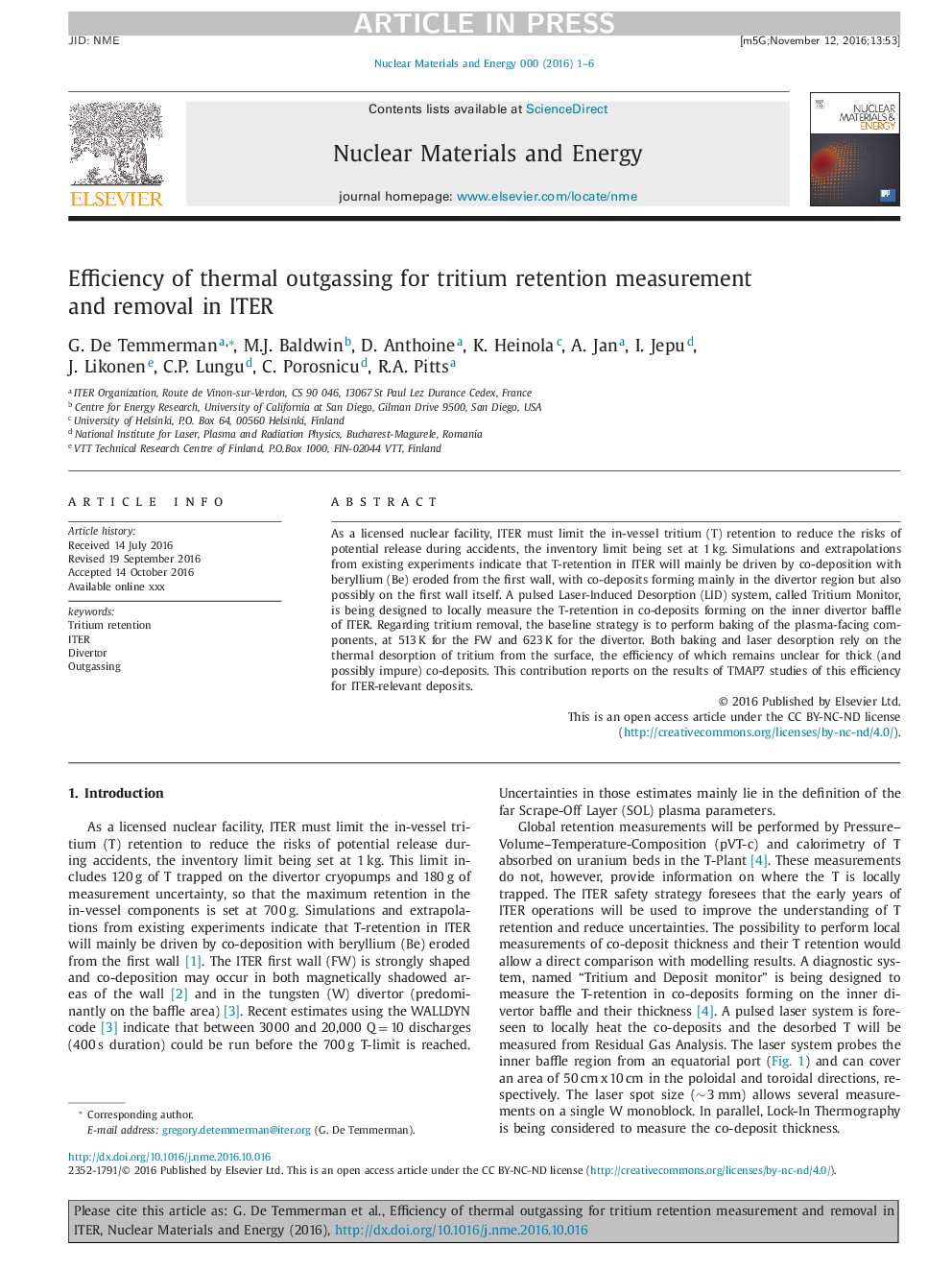| کد مقاله | کد نشریه | سال انتشار | مقاله انگلیسی | نسخه تمام متن |
|---|---|---|---|---|
| 7987450 | 1515278 | 2017 | 6 صفحه PDF | دانلود رایگان |
عنوان انگلیسی مقاله ISI
Efficiency of thermal outgassing for tritium retention measurement and removal in ITER
دانلود مقاله + سفارش ترجمه
دانلود مقاله ISI انگلیسی
رایگان برای ایرانیان
کلمات کلیدی
موضوعات مرتبط
مهندسی و علوم پایه
مهندسی انرژی
انرژی هسته ای و مهندسی
پیش نمایش صفحه اول مقاله

چکیده انگلیسی
As a licensed nuclear facility, ITER must limit the in-vessel tritium (T) retention to reduce the risks of potential release during accidents, the inventory limit being set at 1Â kg. Simulations and extrapolations from existing experiments indicate that T-retention in ITER will mainly be driven by co-deposition with beryllium (Be) eroded from the first wall, with co-deposits forming mainly in the divertor region but also possibly on the first wall itself. A pulsed Laser-Induced Desorption (LID) system, called Tritium Monitor, is being designed to locally measure the T-retention in co-deposits forming on the inner divertor baffle of ITER. Regarding tritium removal, the baseline strategy is to perform baking of the plasma-facing components, at 513Â K for the FW and 623Â K for the divertor. Both baking and laser desorption rely on the thermal desorption of tritium from the surface, the efficiency of which remains unclear for thick (and possibly impure) co-deposits. This contribution reports on the results of TMAP7 studies of this efficiency for ITER-relevant deposits.
ناشر
Database: Elsevier - ScienceDirect (ساینس دایرکت)
Journal: Nuclear Materials and Energy - Volume 12, August 2017, Pages 267-272
Journal: Nuclear Materials and Energy - Volume 12, August 2017, Pages 267-272
نویسندگان
G. De Temmerman, M.J. Baldwin, D. Anthoine, K. Heinola, A. Jan, I. Jepu, J. Likonen, C.P. Lungu, C. Porosnicu, R.A. Pitts,